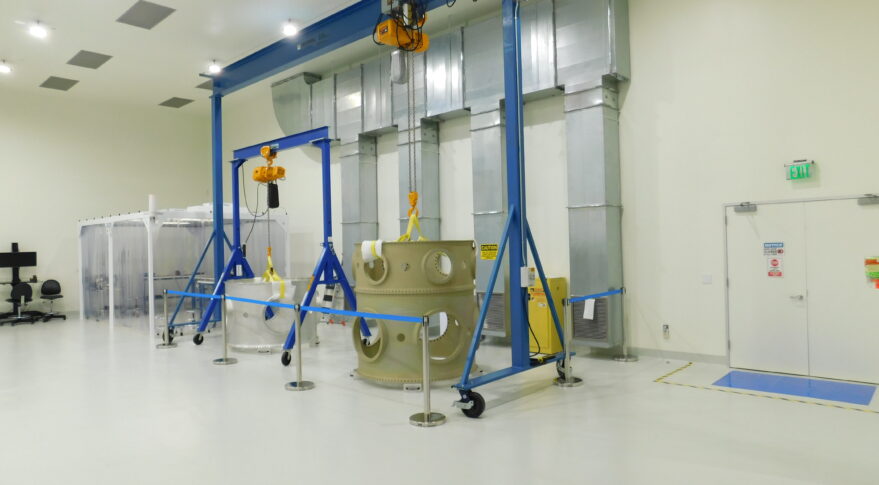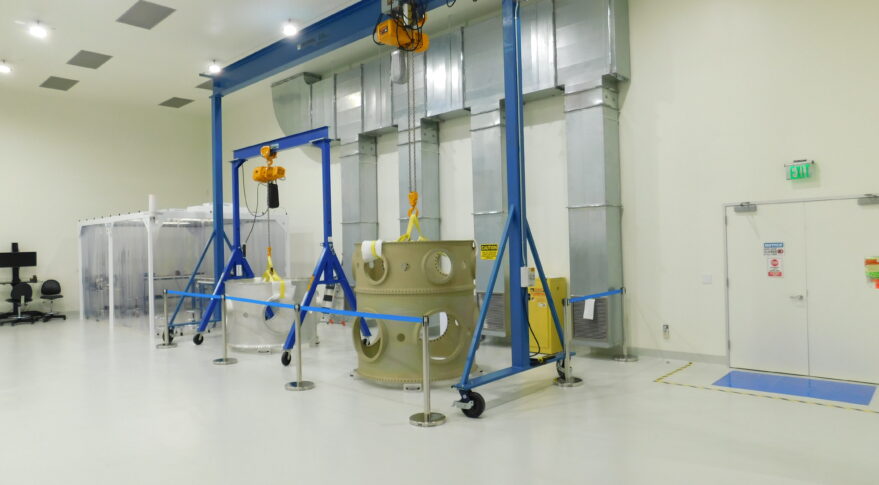
As DoD shifts to smaller satellites, rideshare questions emerge (Image Credit: Space News)

WASHINGTON — The Space Development Agency, a defense organization building a mesh network of satellites in low Earth orbit, plans to start launching payloads this fall, and by 2024 as many as 176 spacecraft will be ready to go to orbit.
SDA’s constellation will be launched by National Security Space Launch providers SpaceX and United Launch Alliance, and Space Force officials said they would be ready to support SDA launches. However, these will not be traditional NSSL missions that fly a large primary satellite and occasionally a smallsat rideshare payload. SDA’s smaller satellites are expected to launch in batches of between 14 to 21 spacecraft in a single rocket.
The agency’s strategy to deploy a large constellation of small satellites for communications and missile-tracking is widely supported on Capitol Hill but lawmakers in the 2023 National Defense Authorization Act draft bill raised concerns about the ability of the NSSL program to perform SDA’s rideshare launches on budget and on schedule.
Specifically, the House Armed Services Committee suggested that DoD should hire a “common launch integrator” to help manage the integration of SDA’s satellites on NSSL rockets. With a growing number of launches and a demanding schedule set by SDA, the HASC said it’s unclear how the Space Force intends to “drive down cost, reduce risk, and ensure launch reliability and performance.”
A common launch integrator would work with SDA, satellite manufacturers and launch providers to facilitate the integration of payloads with multiple launch vehicles, said the HASC. The committee asks the Space Force to report back on the “benefits, including cost and schedule, of using one consistent launch integration solution across all types of space and launch vehicles, and all plans to utilize a common launch integrator for current and future programs.”
A spokesperson for SDA said the agency could not comment on pending legislation. “We are prepared to support U.S. Space Force efforts to provide the required briefing regarding the impacts of a common launch integrator, if and when the bill is enacted,” the spokesperson told SpaceNews.
The HASC suggested DoD could use the existing U.S. Space Force Launch Manifest Systems Integrator (LMSI) contract to handle the SDA payload integration workload.
The current LMSI contractor, Parsons Corp., advocated for the HASC language. The engineering and infrastructure firm in 2019 won a $94 million five-year contract to integrate small satellites as secondary payloads on NSSL or civil space missions. The company operates a smallsat integration facility in Torrance, California.
The LMSI contract would be up for recompete in 2024, around the time when SDA expects to be ramping up launches and the Space Force would be in the process of selecting launch providers for the next NSSL contract. Space Force officials said they might consider working with more than two launch companies.
Richard Waterman, Parsons’ vice president of payload integration and operations, said the HASC proposal is trying to address the problem of how to make launch operations more efficient as more satellite manufacturers and possibly more launch providers enter the national security market.
For missions with multiple payloads like SDA’s, “getting everything lined up and ready to launch on time is like herding cats, because you have to bring satellite programs that are each on very different schedules,” Waterman told SpaceNews.
SDA and the Space Force would benefit from having an integrator to “sync everything up and get all of those systems onto a single launch which is a bit of a challenge,” he said.
For example, if SDA were trying to launch a batch of 21 satellites and some were late, the integrator could work with vendors to move up other satellites that are ready to go and book the stragglers on later launches. “With an integrator, you can bring all of that together and ensure vendors’ proprietary information is not shared with competitors,” said Waterman.
Based on SDA’s projections, when it starts deploying its Transport Layer Tranche 1 and Tracking Layer Tranche 1 in 2024 and 2025, over the course of a year there would be at least one launch per month, said Waterman. For the NSSL program, “that’s not an easy feat.”
An SDA official, meanwhile, said the agency prefers to have flexible options for launch and would not necessarily favor universal use of a common launch integrator.
An integrator would make sense in some scenarios when multiple satellites with different hosted payloads have to be launched simultaneously, the official said, but it would not be as helpful for launches of Transport Layer satellites that are pretty standardized. In fact, the official said, SDA’s own internal analysis determined that using an integrator for Tranche 0 and Tranche 1 launches would increase costs and impact launch readiness timelines.
The official said that if a launch integrator were needed, it would be sought in a “full and open competition” as in all other SDA activities.








